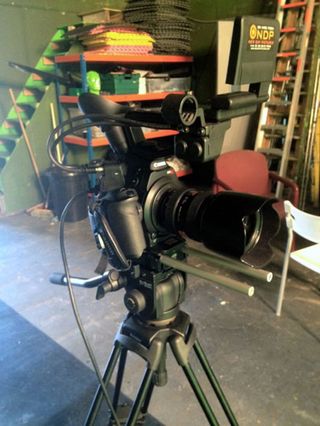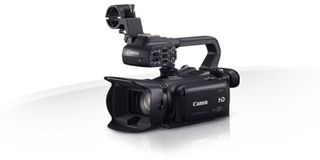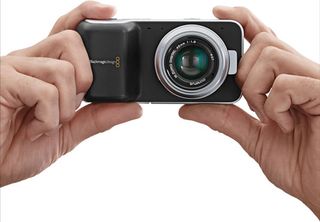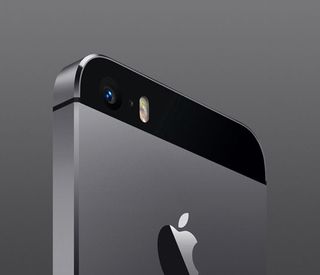How to choose the right movie camera
With budget cameras like the RED Epic being used on films like The Hobbit, pro movie cameras are more affordable than ever. Mike Griggs explains how to find the right one for you.
There's never been a better time to make your own movie. With today's technology, anyone can create their own masterpiece more quickly and simply than ever.
Whether you're shooting your own creative short or feature, creating documentaries, shooting a studio show for web or TV, or getting footage for VFX shots, there are a range of camera options which can help you realise your filmic vision.
Problem is, there are now so many good cameras out there that knowing what to choose can be confusing - and potentially very expensive if you make the wrong choice. So here are a range of tips to help ensure you choose the best camera for your needs.
Rent or buy?
One of the first questions to ask yourself about buying a movie camera is whether you should buy one at all. Renting is an affordable way of getting access to a range of cameras that may be outside of your budget to buy.
Renting usually means you can get all the accessories you need to make sure the camera works on the day. Remember that accessories such as tripods, lights, memory cards, tracks etc can be pricey in their own right - so renting them along with your camera is a great way to economise.
Pretty much any camera can be rented to fit your budget. Everything from Panasonic and Canon DSLRs through to cinema-grade cameras from companies such as RED, Alexa, Sony and Canon can all be hired with lenses and tripods for a fraction of their retail price.
If you do decide to buy, one way you can minimise your spend is to become the renter rather than the rentee. Renting out your equipment can be a great way of networking and picking up work as well. Just make sure you have adequate insurance.
Get the Creative Bloq Newsletter
Daily design news, reviews, how-tos and more, as picked by the editors.

Don't overlook fixed lens cameras
The Canon 5D Mark 2 created a storm when it was released because it allowed a new kind of film making. Its full frame sensor, coupled with a huge range of lenses, meant that we could get creamy rich bokeh (which would have been hard to replicate with even the best cinema cameras of the time) - all for less than the cost of a cinema grade lens.
In fact many were so enamoured with the new look they were happy to ignore the compromises that came with shooting on DSLRs. They forgot the lens was important as the camera and sometimes cost as much if not more.
With the tilted screens and improvements in focusing seen in Canon’s new 70D, DSLRs are becoming more video friendly. But fundamentally DSLRs are designed for still shooting and not for video - so don't overlook the fact that ‘traditional’ cameras may be a better bet. For example Canon’s XA-25 is a excellent option that's cheaper than a body for a Canon 5D MK3, one of the kings of the video DSLR world.
Cameras like the XA-25 offer features such as XLR inputs, focus peaking, optical stabilisation, WiFi and a 20x optical zoom lens with a focusing system designed purely for video only, not to mention a really good handle.

Dynamic range
The ultimate video camera is one that can change lenses, and that's designed purely for video. Ideally it will shoot using a method that captures all the highlight and shadow information in format to give you the maximum amount of latitude or dynamic range in your shots.
Canon's Cinema Cameras do all this, with the Canon Log Gamma offering a great way of capturing a nice flat image that can be adjusted in post processing.
The next step from picture profiles is to shoot purely in RAW formats, which take as much data as they can from the camera sensor.
Shooting in RAW used to be the purview of cameras such as the RED EPIC, a DSLR sized movie camera capable of shooting 5k resolution, RAW at frame rates up to 120fps with a massive dynamic range. But RAW has recently arrived in consumer camera price levels thanks to Blackmagic with their Cinema Cameras, which enable you to shoot RAW at 4k res for just $4,000. There's even a model that can fit in your pocket, the dinky Pocket Cinema Camera, which costs just $1,000.
RAW software
While RAW literally gives you the best image, it comes with quite heavy caveats. It eats up disk drive space. And it can be a pain to work with on your computer unless you have the right software to decode it. Black Magic excellent colour grading package Resolve can help with this, but you'll need a fast, powerful computer to use it.
Also note that you may not need to buy a new camera to get the most from shooting in RAW if you own a Canon DSLR. The wonderful people at Magic Lantern make custom firmware which transforms even older still cameras like the Canon 50D into fearsomely capable RAW video camera.

Smartphone video
The biggest upheaval in the video camera market of late has not actually come from companies like RED but a more unexpected direction - the rise of high-end smartphone video. So before you invest in a dedicated movie camera, it's worth checking whether your phone's video capabilities are as good (they might even be better!).
With recent improvements in smartphone cameras' lowlight capabilities, along with features such as the new iPhone 5s 120fps capture capability, which enables you to make lovely slow motion footage, you may well be reading this article on the most full featured video camera youv'e ever owned!

Conclusion
When deciding which movie camera to buy, the key things I'd recommend looking for the ability to shoot in 24, 25 and 30 fps, with ideally the ability to double these or more to create slow motion footage. I'd also seek out a high bitrate codec, with a way of altering the profile to get the most dynamic range or ideally RAW.
But most importantly, don’t blow your budget on just the camera. Account for accessories such as tripods as well as make sure your computer system is up to dealing with the footage from your chosen camera.
A final thought: don’t get lost in the camera tech. If it's all becoming too much just grab whatever camera you have handy (even if it is your phone) and go and shoot with it. That will be the best way to find the kind of video content that you like making and then you can buy the best camera for that purpose.
Words: Mike Griggs
Mike Griggs is a freelance concept 3D, VFX and Mograph artist working across TV, exhibition and digital design. Follow him on Twitter @creativebloke
Delivered in conjunction with ZED!
This content was produced in collaboration with HP & Intel as part of ZED - a Pop-Up Studio for the Creative Community held in Soho, London. For more information about ZED and any future events see here.

Thank you for reading 5 articles this month* Join now for unlimited access
Enjoy your first month for just £1 / $1 / €1
*Read 5 free articles per month without a subscription

Join now for unlimited access
Try first month for just £1 / $1 / €1
The Creative Bloq team is made up of a group of design fans, and has changed and evolved since Creative Bloq began back in 2012. The current website team consists of eight full-time members of staff: Editor Georgia Coggan, Deputy Editor Rosie Hilder, Ecommerce Editor Beren Neale, Senior News Editor Daniel Piper, Editor, Digital Art and 3D Ian Dean, Tech Reviews Editor Erlingur Einarsson and Ecommerce Writer Beth Nicholls and Staff Writer Natalie Fear, as well as a roster of freelancers from around the world. The 3D World and ImagineFX magazine teams also pitch in, ensuring that content from 3D World and ImagineFX is represented on Creative Bloq.
